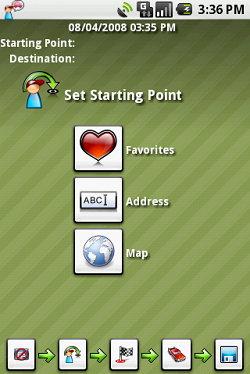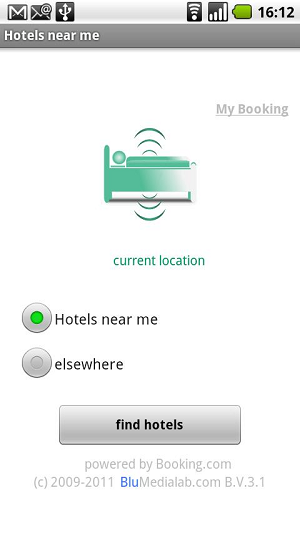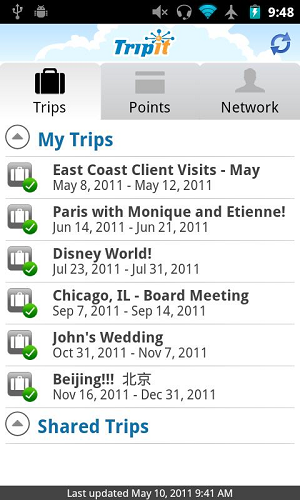Written by thenextweb
We recently discovered that the iPhone has become the most commonly used camera among Flickr users. Of course, there are photography purists who will say that taking a photo with your phone isn’t the same as using a sophisticated SLR camera, but the results speak for themselves. An improvement in the quality of camera phones, coupled with some great apps that really let you get creative, and you’d be amazed what kinds of photos you can take with your phone. As the saying goes, the best camera is the one you have with you.
We’ve put together a short list of guidelines to keep in mind when using your phone, along with some examples of great phone photography and iPhoneography.
Know your phone
Get used to your phone. If there’s a way to add a shortcut that lets you fire up the camera straight away, it’s a great way to make sure you don’t miss those quick photos that often pass you by. If you own an iPhone you can set your home button to act as a shortcut to launch the camera. Android users can use the appQikCam which acts as a shutter button sitting right on your home screen. Aside from opening the camera app, you should be familiar with how it works. Camera phones aren’t renowned for the their speed, so it’s best to know the shutter speed, and understand the exact moment the photo is taken.
Take note of your lighting
One of the most important things to consider when taking photos with your phone is lighting. Bad lighting will kill the best of pictures, even with a decent camera, so when taking portrait photos with your phone, make sure your subject is well lit. If you’re indoors, the photography rule of keeping the light to your back is just as important. Light behind your subject will only darken the image. And regardless of how good your lighting is, also make sure you hold your phone steady. The slightest shake could blur your image, and ruin what would have been the perfect picture. Some camera apps also aim to help counteract the effect of shaking. iPhone users can use Pro Camera, a fabulous $2.99 app which includes an Anti-Shake Image Stabilizer among many other features. Android users can opt for the popular app Camera 360 which features a similar stabilizer.
With street photography, be aware of your lighting, but you don’t necessarily have to follow the rules. Depending on the mood you’re aiming for, sometimes taking a photo facing directly into the sun, the photo filled with lens flare and all, can lead to a great photo like Alexander Kesselaar’s dreamlike photo shot with Hipstamatic:
Avoid using digital zoom
Digital zoom is deceiving, and some phones, like the Google Nexus S, don’t even come with the feature. In essence, all digital zoom does is enlarge the image rather than zoom in, and so it immediately becomes pixelated. If you can, it’s best to avoid using it, and instead simply move closer to your subject.
Consider composition
Think about your photo before you take it. Take the rule of thirds into consideration. Many camera apps on the iPhone, and on various android handsets, will place visible grid lines on your screen making it easy to visualize the image with the rule of thirds in mind. Placing the main subjects directly along the grid lines can often lead to a stronger composition, as the image below demonstrates.
Think about your background
A camera phone isn’t able to isolate the subject from the background. You have two options to deal with this. You can either go with less clutter, and make sure your subject is in front of a simple background, or simply fill the image with your subject. This is particularly important when it comes to portraits. There are other times you can throw this rule right out the window. With street photography, for example, a busy scene which fills up the screen can often make for a fascinating image.
Have an arsenal of apps on your phone
Not everyone will agree with this point, but sometimes applying a cool filter to an image can make it even better. There’s no limit to the number of great iPhone and Android apps that can enhance your photos. The most obvious example is Instagram, but other apps worth having on your phone include PicPlz, Molome,Hipstamatic and MoreLomo. Other than apps which let you apply interesting effects to your images, you can also install Dermandar, a nifty app for creating stunning panoramas.
A common and popular effect found in many phone apps, such as Instagram, is the tilt-shift effect, which gives photos a toy-like appearance. Duncan’s image from Flickr is a great example of how tilt-shift can really bring a photo to life.
Don’t limit yourself to one photo
There’s no reason to satisfy yourself with just one photo, and especially with a phone, you’re better to make several attempts at capturing the same image. That way you can be sure to avoid shake, blur, and any other issues that you’re likely to face.
Experiment and try new things
Don’t be afraid to try interesting angles. Sometimes playing around with angles can make an image look contrived, and other times, it just works. There’s no harm in experimenting and seeing if something works. Alexander Kesselaar‘s photo taken with an iPhone is an interesting example of what simply tilting your phone at an angle can get you:
Don’t go for the obvious shot. Some of the most common photos taken with phones include cloudy skies and telephone poles, your own shoes, and your cup of coffee. While that’s all good and well, there’s only so many of those you can take. Think outside the box. Go outside your comfort zone, and try something different. A great example of just how experimental you can get with your photography, using nothing more than a phone can be seen in Phillipe Boivin’s underwater photo taken with an iPhone.
Keep your lens clean
We don’t think twice about keeping our camera lenses clean, but can often forget to do the same with our phones. Finger smudges can easily affect the quality of your images. Using a microfiber polishing cloth is the best way to go about ensuring there are no smudges on your lens. Most smartphones come with a microfiber cloth to clean the screen, so you can also use them to clean off your lens. Don’t use a tissue as it could scratch your lens.
Accessories won’t hurt
Getting some accessories for your phone won’t hurt either, but they aren’t a must. If you’re in need of a flexible tripod to keep your phone steady, or get an interesting angle you wouldn’t otherwise reach, Joby’s GorillaMobile will keep your phone steady. PhotoJojo is a great source for fisheye, telephoto and wide angle lenses that you can mount on any cell phone. You can even get an iPhone SLR mount which will let you use your Canon and Nikon lenses on your iPhone giving you depth of field and manual focus using your phone. The mount, however, doesn’t come cheap at $249. That said, if you’re serious about your iPhoneography this could be a great addition to your accessories collection.
Some examples to get you inspired
If you’re still not completely convinced that you can get some pretty impressive images with your phone, we’ve dug up a few examples to help inspire you.
Fstoppers shot an entire fashion shoot with what they call the worst possible camera, the iPhone 3GS. The results can be seen in the Flickr album, which contains both the raw and edited images. Of course, as they say in their blog post, there is more to the photoshoot than just the camera:
“I created this video to simply show that you should not be limited by your camera. Obviously there was a lot that went into this shoot including a professional model, hair and makeup, a studio, lighting, and a retoucher. We may create another video in the future where we shoot with only natural light but this video is simply about the camera. There are so many photographers who are obsessed with noise, sharpness, color, dynamic range, megapixels, chromatic aberration, moire, distortion, etc. So many photographers get wrapped up in the technical side that they forget how to take compelling images. This video is for them.”
The image on the left is as it was taken with the iPhone, and the image on the right is the one that was processed.
Hipstamatic has been featured in Foreign Policy in a series of photographs taken as part of a photojournalism experiment at the front line in Afghanistan. So far there have been three sets published in the series, The War in Hipstamatic, Heavy Metal, and Female Engagement. This is a great example of what you can do without having to lug around a huge SLR camera and a bunch of lenses.
Professional examples aside, there are stunning photos on Flickr that have been taken with iPhones. A quick glance at the search results for iPhoneography should be enough inspiration to get you started. And don’t forget to check out some of the top iPhone and Android photography apps out there.
Bonus: This is how I shop for groceries


































 The easiest way to migrate your Facebook friends is to
The easiest way to migrate your Facebook friends is to  Lastly, head to Google+ and go to the Circles tab. Click “Find and Invite” and click the Yahoo button. It’ll add all your Yahoo Contacts (or Facebook Friends, in this case), to the Find and Invite page and you can add your Facebook friends to your circles. I, for one, was shocked at how many of my friends were already using Google+ without me knowing.
Lastly, head to Google+ and go to the Circles tab. Click “Find and Invite” and click the Yahoo button. It’ll add all your Yahoo Contacts (or Facebook Friends, in this case), to the Find and Invite page and you can add your Facebook friends to your circles. I, for one, was shocked at how many of my friends were already using Google+ without me knowing.
 Strangely, when I did this, one of my two videos was missing from the “videos” folder in the ZIP file. However, I was still able to download that video from Facebook by installing the
Strangely, when I did this, one of my two videos was missing from the “videos” folder in the ZIP file. However, I was still able to download that video from Facebook by installing the 












